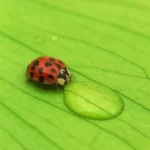The humble apple, a fruit cherished by humans, also finds itself on the menu for various creatures in the animal kingdom. Apples, with their enticing sweetness and crisp texture, serve as a delectable treat for a range of wildlife. From birds to mammals, these fruits are enjoyed by many. In this exploration of nature’s apple enthusiasts, we’ll uncover which animals have a penchant for apples, how they consume them, and the role apples play in their diets and ecosystems.
Birds and Apples
Birds, with their diverse diets, often partake in the consumption of apples. Numerous avian species, such as orioles, robins, and cedar waxwings, are known to relish this fruit. They typically peck at the fruit while perched on trees or the ground. In doing so, birds assist in the natural dispersal of apple seeds. Moreover, some birds, including woodpeckers, help apple trees by feeding on insects that can harm the tree’s health. Apples not only provide nutrition for these feathered friends but also serve as an essential part of the apple tree’s lifecycle through pollination.
Mammals and Apples
Apples are equally appealing to many mammals, both large and small. For instance, deer are fond of apple orchards, where they can be observed grazing on fallen apples. Squirrels, ever resourceful, are known to collect and store apples for future consumption. Bears, when apples are in abundance, find them to be a delicious and energy-rich food source, making them an important part of the bear diet, particularly during the autumn when apples are in season. Foxes, raccoons, and even domesticated animals like horses and cattle may also enjoy the occasional apple. These mammals are attracted to the sugar and nutrients that apples provide, making them a valuable addition to their diets in certain seasons.
Insects and Apples
While insects may not be the primary consumers of apples, they play a vital role in the world of apple trees. Bees, in particular, are key players in apple tree pollination. When apple trees bloom, bees visit the flowers to collect nectar and, in the process, transfer pollen from one blossom to another. This essential pollination step is what allows apple trees to produce fruit. Without the diligent work of bees and other pollinators, the apple tree’s yearly harvest would be significantly diminished.
However, not all insects interact with apple trees in a positive way. Some pests, like apple maggots, codling moths, and aphids, can damage apples by feeding on their flesh or infesting the fruit. These insects can be a nuisance to orchardists and fruit growers, often necessitating control measures to protect the apple crop. Nonetheless, it’s essential to manage these pests responsibly to minimize harm to beneficial insects like pollinators.
Role in Ecosystem
The animals that eat apples, whether they are birds, mammals, or insects, all contribute to the greater ecosystem in unique ways. Apples play a crucial role in these ecosystems by providing sustenance for a variety of species and promoting seed dispersal.
When animals consume apples and subsequently move away from the source, they unknowingly help in spreading apple seeds. In their droppings or by accidentally dropping seeds while eating, these creatures participate in the natural distribution of apple trees, allowing them to grow in new locations and maintain genetic diversity. This process is vital for the survival and genetic health of apple tree populations.
In the grand tapestry of life, apples and the animals that enjoy them are interconnected, each playing a part in the intricate dance of ecosystems. The consumption of apples by various creatures fosters biodiversity and enriches the environment by promoting the growth and survival of apple trees and other plant species. As such, apples serve as more than a simple fruit; they are a cornerstone in the web of life, sustaining numerous species and enhancing the health of our natural world.
Human Impact
Humans have a profound impact on the relationship between apples and the animals that consume them. We have cultivated apple trees for centuries, selectively breeding for desirable traits and creating the apple varieties we enjoy today. Apple orchards, whether in expansive commercial operations or small-scale family farms, are carefully managed to ensure abundant harvests. These orchards not only provide apples for human consumption but also serve as crucial food sources for animals.
The relationship between humans and apples goes beyond cultivation. Apples have found their way into our mythology, folklore, and art. Their symbolism extends into various cultures, representing love, temptation, knowledge, and even simplicity. The apple’s significance in human culture is intertwined with its role as a vital source of sustenance for both us and the wildlife we share our environments with.
Conclusion
The consumption of apples by animals is a beautiful testament to the interconnectedness of nature. Birds, mammals, and insects all play unique roles in the story of apples, from pollination to seed dispersal. While humans have certainly shaped the apple tree’s evolution and continue to do so in orchards worldwide, the ecological relationships that involve apples remain vital to ecosystems.
As we appreciate the appeal of apples, it is essential to recognize the broader ecological picture. By nurturing these natural connections and adopting responsible agricultural and conservation practices, we can ensure that apples continue to be a source of nourishment and delight for a variety of species in the years to come. Whether enjoyed by birds, mammals, or insects, apples are a testament to the abundance and wonder of the natural world.



